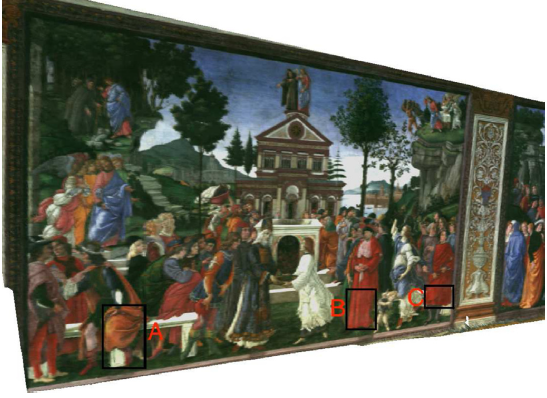3D scanning Part C: Artefacts and art works related projects

Numerous works have been reported in the literature, revealing the potential of 3D scanning applications. Different ‘objects’ required different approaches and the most significant of them are presented in Table 1. Other, small scale works with novel approaches for 3D scanning are presented in a forthcoming article.
Table 1: 3D scanning projects on the museums/ sites field
| Project | Approach |
| Madonna col Bambino of Giovanni Pisano |
National Research Council of Canada and the University of Padova – digital images |
| ‘Cappella degli Scrovegni’ |
National Research Council of Canada and the University of Padova – digital images |
| Florentine ‘Pietà’ |
Watson Research Center - stereographic techniques. Over 1 000 scans gave a final model resolved to 1–2 mm |
|
Sistine Chapel digitization |
RGB-ITR (Red Green Blue e Imaging Topological Radar) laser scanner prototype, developed by the UTAPRAD-DIM (Technical Unit for the development of Applications of RADiations e Diagnostics and Metrology) lab of C.R. ENEA Frascati. The preservation of the frescos is put at risk by the salt efflorescence (e.g., calcium carbonate) due to physical and chemical agents |
| ‘‘The Digital Michelangelo Project’’ |
describes the pipeline and the experience of the digitization of 10 statues created by Michelangelo, two building interiors, and 1163 fragments of an ancient marble map in Italy. They adopt triangulation laser scanners, time-of-flight laser scanners and digital cameras |
| ‘‘The Great Buddha Project’’ |
Full pipeline and challenges to digitally archive and restore three large Buddha statues measuring 2.7, 13 and 15 meters in Japan are described. Their main sensor was a time-off light laser scanner. The challenges and solutions dealing with an outdoor environment and a new algorithm for registration, and integration, were some of the contributions in this work |
| ‘‘The Minerva Project’’ |
Related to the Minerva of Arezzo, an ancient 1.55 meter tall bronze statue located in Italy. The 3D model is intended to keep track of the variations during the restoration process of the statue. A high-resolution 3D triangulation laser scanner was used in this project |
| ‘‘The Eternal Egypt Project’’ |
A digital guide and a virtual museum of artifacts from the ancient Egypt. This project adopts a time-of-flight range sensor. 2000 2D scans, 16 3D and four navigable environments compose this virtual collection |
| ‘‘The Pieta Project’’ |
Digitization of a large 2.26 meter-tall marble sculpture, located in Italy and created by Michelangelo. They use a triangulation scanner and a video camera for the texture. Among the main contributions of this work is the enhanced texture obtained by the estimation of the intrinsic properties of the surface as a Bidirectional Reflectance Distribution Function (BRDF) |
| ‘‘The Beauvais Cathedral Project’’ |
Digitization of the Cathedral of Saint-Pierre in Beauvais, France |
| ‘‘The Angkorian temples project’’ |
Reconstruction of a large area containing more than 1000 historical structures in Angkor, Cambodia using aerial images. It is based on photogrammetric 3D modeling and shows interesting results for the archaeological landscape documentation of large cultural heritage sites |
| ‘‘The Great Buddha of Bamiyan project’’ |
Digitization of two large Buddha statues measuring 38 and 53 meters located in Bamiyan, Afghanistan. They adopt three different photogrammetric techniques from images of different cameras |
| “Temptations of Christ” |
Sistine Chapel. The fresco has sizes of 3.45 m - 5.5 m and it has been scanned by the RGB-ITR system, with an angular resolution of 0.002and a sweep rate of 5000 sample points per second |
